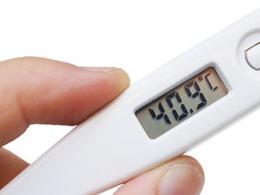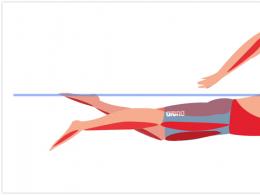What does 4237 mean on bananas. What do the stickers on fruits and vegetables mean. Laser engraving - as a replacement for stickers on vegetables and fruits
When going to the supermarket for groceries, you need to keep your ears open and your eyes open. And not just to avoid putting too much into your cart. Take, for example, stickers on vegetables and fruits. Everyone saw them, but few took a closer look. But in vain. After all, they can tell you a lot. Including which products should definitely not be brought to the checkout.

Who hasn’t at least once seen stickers on bananas, apples or tangerines? I remember that once upon a time they even served as a way of creative self-expression and almost “designer” apartment decor. But stickers are placed on vegetables and fruits not for beauty. They serve as a source of valuable information. You just need to know how to read it.

No, we're not even talking about a barcode. And about the other room, located a little higher. It usually starts with the "#" symbol and consists of 4-5 digits. This is an international identifier that encrypts the type of vegetable or fruit. And something else. Let's try to figure it out.

For example, here is an average apple. Its international classification number is 4131. If the code consists of only 4 characters, this means that the vegetable or fruit was grown under “traditional” conditions or using pesticides approved by international standards. An acceptable option for purchase, but it would be better to look for something else.

If the code consists of 5 characters and starts with the number “9”, this means that the product is grown organically, without pesticides or genetic modifications. The code for an organic apple will look like this: 94131. A good choice, worth picking up and bringing to the checkout. The only pity is that the natural product mostly doesn’t look very tempting: not as big and glossy as its brothers from the next point.

Do you see the five-digit code that starts with the number "8"? Stay away from such specimens! After all, this is a genetically modified product. For example, the code for a GMO apple is 84131. And you are unlikely to want to give it to your child at school.
Stickers on vegetables and fruits: what you didn’t know about
Evgenia Beresneva January 23, 2015
Stickers on vegetables and fruits: what you didn’t know about
Photo: moskva.fruitinfo.ru
A small sticker on a banana or tangerine can be a source of important information. And some people create entire collections from them. We will tell you some interesting facts.
Who doesn't know the sticker from the photo? For many of those whose childhood was spent in the USSR, it was associated with rare joy - oranges and tangerines, and sometimes bananas.
The children carefully and even with some trepidation tore off the sticker, re-sticking it on their desk, on the refrigerator (there were no travel magnets yet), on the tiles in the kitchen, or simply on their forehead.
Nowadays stickers on fruits and vegetables can no longer surprise anyone. They are almost always found on bananas, oranges, and are often found on apples, pears, kiwis and other fruits, and sometimes on vegetables - cucumbers, tomatoes, peppers.
What are they needed for
New.upakovano.ru
This is how the manufacturer labels their product. After all, when buying milk or pasta, you distinguish who produced this or that product, and choose based on this.
Bananas are not packaged in boxes or bags, so the only way for the manufacturer to advertise itself is with a small sticker. One banana manufacturer even glues a small comic strip to each banana to attract the consumer’s attention.
Next time you will choose bananas, apples or tomatoes from the brand you once liked.
Some stickers also have a barcode or QR code, which encrypts information about the product, which can be read by a cashier in a supermarket, or you can find out more about the product yourself using a special mobile application for reading codes.
They're actually edible
Of course, this does not mean that the sticker must be eaten. But the manufacturers claim that all stickers are made from special edible paper. This, for example, is sometimes used in decorating cakes. Even the glue applied to the sticker is edible.
You will remove the sticker along with the peel from the banana and tangerine. But if you accidentally eat a piece of sticker from an apple or don’t completely wash off the sticky residue from it, nothing bad will happen to you.
If you still want to remove the sticker without a trace, the fastest and most convenient way is to use a piece of tape slightly larger than the sticker. Glue it on top and remove it - it will take the sticker with it.
The numbers on the sticker can be deciphered
Some stickers contain a digital code. What does it mean?
Typically, four numbers on a sticker indicate that the fruit or vegetable was grown in a traditional way.
If there are five numbers, then you need to look at which number comes first. If the number begins with the number 8, you have a product that was grown using genetic engineering technologies - the same GMO that causes so much controversy.
If the first number is 9, the fruit or vegetable is grown using so-called organic technologies, in conditions as close as possible to natural conditions.
Otherwise the code is usually the same. For example, on bananas you will see the number 4011 or 94011 if the product is declared organic. The numbers on apples are 4130, and on kiwis they are 4030.
Laser engraving instead of stickers
Soon, stickers on fruit may disappear forever; in the USA and Europe, they are gradually being replaced by laser engraving.
Such “tattoos” are made using iron hydroxides and oxides, which, when applied, do not penetrate the skin of the fruit. Coding allows products to be identified throughout the entire delivery.
So far, this method is used most often on pomegranates, melons, oranges, and bananas.
Ecology of consumption. Food and Recipes: Very often you can see small stickers on imported fruits. Often no one pays much attention to them. But in vain, because, in addition to the bright logo, they contain a digital code. What is it and what is it eaten with?
Very often you can see small stickers on imported fruits. Often no one pays much attention to them. But in vain, because, in addition to the bright logo, they contain a digital code. What is it and what is it eaten with?
Manufacturers label fruit not only to indicate their company name, but also to provide information about the product.
We invite you to get rid of the doubts that overcome you when choosing fruits and learn something new. Learn to understand the code on stickers!
Fruit stickers
4-digit code, first digit 3 or 4
If there are 4 numbers on the sticker, it means the fruit was grown with the maximum use of agricultural technologies, which includes the application of fertilizers and pesticides.
5-digit code, first digit 8
Genetic engineering was used to grow such fruits. Most often, such stickers of GMO products can be found on foreign melons, bananas and papaya.
5-digit code, first digit 9
This code indicates that the fruit was grown on the farm by hand. The main thing is no harmful fertilizers. This fruit is organic.
Fruits that are exported from abroad must be labeled. If there are no stickers, they have probably been removed.
To ensure that the product is truly beneficial, buy it only in season. Strawberries - in summer, tangerines - in winter. published





